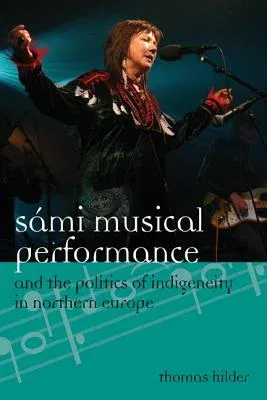The Sámi are Europe's only recognized indigenous people living across
regions of Norway, Sweden, Finland and the Russian Kola peninsula. The
subjects of a history of Christianization, land dispossession, and
cultural assimilation, the Sámi have through their self-organization
since World War II worked towards Sámi political self-determination
across the Nordic states and helped forge a global indigenous community.
Accompanying this process was the emergence of a Sámi music scene, in
which the revival of the distinct and formerly suppressed unaccompanied
vocal tradition of joik was central. Through joiking with instrumental
accompaniment, incorporating joik into forms of popular music,
performing on stage and releasing recordings, Sámi musicians have played
a key role in articulating a Sámi identity, strengthening Sámi
languages, and reviving a nature-based cosmology. Thomas Hilder offers
the first book-length study of this diverse and dynamic music scene and
its intersection with the politics of indigeneity. Based on extensive
ethnographic research, Hilder provides portraits of numerous Sámi
musicians, studies the significance of Sámi festivals, analyzes the
emergence of a Sámi recording industry, and examines musical projects
and cultural institutions that have sought to strengthen the
transmission of Sámi music. Through his engaging narrative, Hilder
discusses a wide range of issues-revival, sovereignty, time,
environment, repatriation and cosmopolitanism-to highlight the myriad
ways in which Sámi musical performance helps shape notions of national
belonging, transnational activism, and processes of democracy in the
Nordic peninsula. Sámi Musical Performance and the Politics of
Indigeneity in Northern Europe will not only appeal to enthusiasts of
Nordic music, but, by drawing on current interdisciplinary debates, will
also speak to a wider audience interested in the interplay of music and
politics. Unearthing the challenges, contradictions and potentials
presented by international indigenous politics, Hilder demonstrates the
significance of this unique musical scene for the wider cultural and
political transformations in twenty-first-century Europe and global
modernity.

